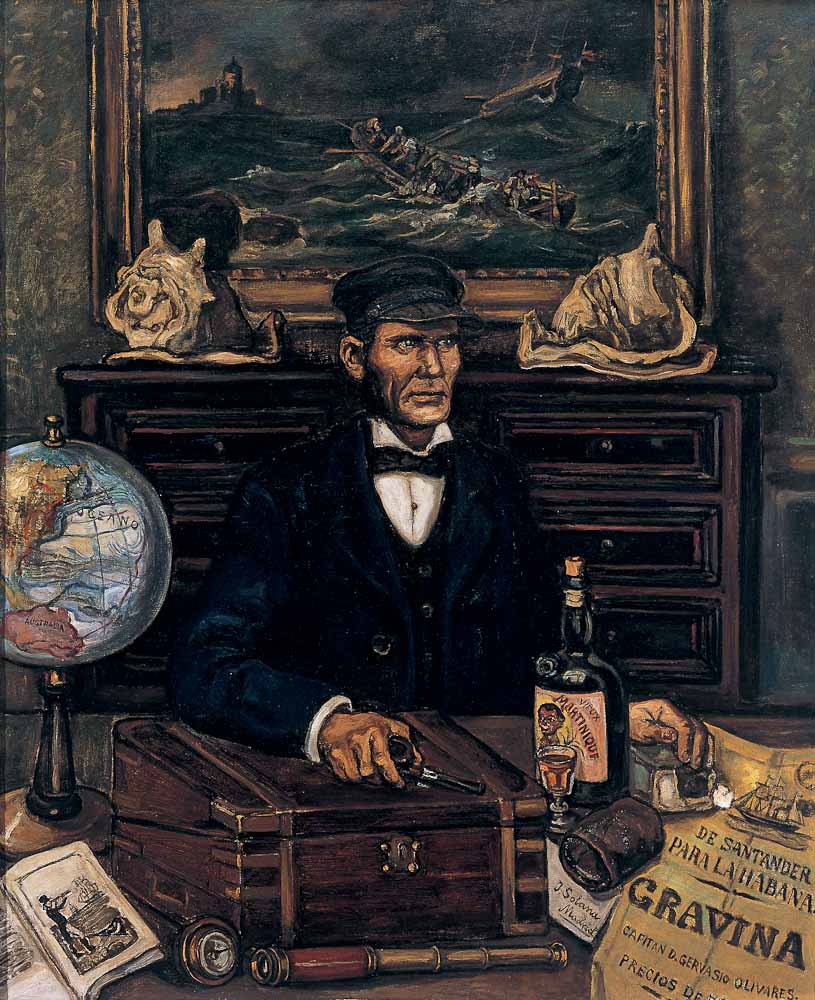
José Gutiérrez Solana (Madrid, 1886-1945)
The Merchant Navy Captain
ca. 1930-1934
WORK INFORMATION
Oil on canvas, 141 x 115 cm
OTHER INFORMATION
Signed at the lower left corner “J. Solana / Madrid”
As in all his portraits, and despite his own statement that “painting paints itself but it does not speak”, Solana describes the sitter here in a literary manner, offering an interpretation that incorporates a symbolic repertoire of images that provides the viewer with clues to that person’s inner life.
Solana always considered himself a “portraitist”, a term he used to distinguish himself from the “portrait painters” and “portrait photographers” of varying degrees of talent who travelled around to popular festivals and fairs in Spain but whom he also admired in that he considered them to be the only painters capable of achieving a real likeness and of expressing immediate reality.
The sitter in The Merchant Navy Captain is Gervasio Olivares, captain of the Gravina, a steam and sailing vessel that ran between Santander and Havana. The vessel’s name appears on the voyage itinerary at the bottom right of the painting. A terrestrial globe and two large sea shells, undoubtedly brought back from the West Indies, reinforce the characterisation of the sitter, as does a bottle of Martinique rum, a packet of tobacco, a small telescope and his trading licence for the port of Santander. Solana’s image of the imposing and reserved Captain Olivares conveys his elevated social status in the society of the period.
This is a crowded but harmonious composition. On top of the piece of furniture that acts as a compositional frieze that closes the scene in the background is a painting of a shipwreck, the composition of which Solana subsequently reused in his painting The Triumph of Death. The frontal perspective creates a harmonious relationship of scale between the various elements in the composition. Aesthetically, the artist adheres to an approach seen in earlier works but here reveals the greater level of technical skill that he had achieved at this period, by which point he used colour to
define form. This was the high point of his career when Solana achieved complete artistic maturity.
María José Salazar
